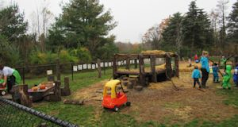Partnering with community resources can be a great way to expand learning opportunities for students. Schools throughout Michigan partner with businesses and community leaders to offer opportunities such as job shadowing, learning applications, and more.
Businesses often embrace opportunities to work with schools to give back to the community and to ensure a qualified workforce. Inviting business leaders into the school to design career academies is just one way to create a bridge beyond graduation.
Another way to create community connections is through applications of learning. Schools can partner with local businesses to expand PE offerings, for example, by using swim lessons at a local facility if the school does not have a pool on campus. Other opportunities include partnering a PE teacher with a fencing instructor to bring a new course offering to the high school. This community involvement can involve other content areas as well, from music to performing arts to outdoor science. Schools can enter into an agreement with the community partner and develop systems where students attend in groups or even individually, during or after school. Activities attended by a teacher may count as instructional time, but even activities pursued by students and families will enrich classroom instruction in an invaluable way.
This partnership benefits the community as well, by keeping funds local and growing small businesses by allowing them to connect with more families. It also promotes equity for families that may not be able to access activities like sports and music due to cost barriers.
With such a win/win opportunity for students, schools, and communities, one wonders why more community partnerships for applications of learning do not occur. Policy needs to expand to offer students more incentives for hands-on learning. Programs in New Hampshire allow students to demonstrate mastery through activities outside of the school walls, while many states continue to be tied to the antiquated concept of butts in seats. Research shows that partnerships benefit all stakeholders. Encouraging schools to look outside of their own walls promotes community, equity, and aids in staffing needs.



Comments
Post a Comment